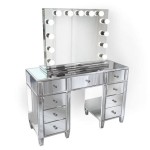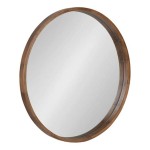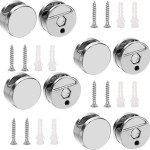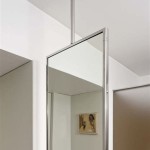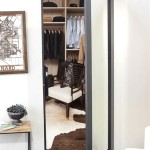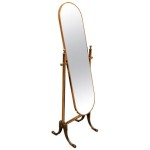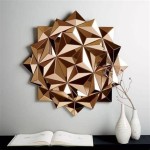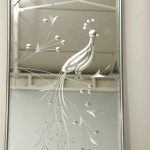Is a Two-Way Mirror Bad? Exploring the Ethics and Practicalities
Two-way mirrors, also known as one-way mirrors or observation mirrors, possess unique optical properties allowing visibility primarily from one side while appearing reflective on the other. This intriguing characteristic leads to both beneficial applications and potential misuse, prompting ethical considerations and practical concerns.
Understanding the Mechanics of Two-Way Mirrors
A two-way mirror is essentially a piece of glass coated with a thin metallic layer, often silver or aluminum. This coating is partially reflective, meaning it reflects some light and transmits the rest. The key to its functionality lies in the difference in lighting levels between the two sides. The observation side is kept dimly lit, while the mirrored side is brightly illuminated. This disparity allows observers to see through the mirror from the darker side, while individuals on the brighter side primarily see their own reflection.
Legitimate Applications of Two-Way Mirrors
Several fields employ two-way mirrors for legitimate purposes, capitalizing on their observation capabilities while maintaining a degree of privacy or security.
Research and Studies
In research settings, two-way mirrors enable observation of subjects without direct interaction, facilitating natural behavior studies in areas like psychology and market research.
Security and Surveillance
Security applications utilize two-way mirrors in interrogation rooms, police lineups, and covert surveillance operations, allowing unobtrusive monitoring of individuals or situations.
Entertainment and Illusion
The entertainment industry incorporates two-way mirrors in stage magic, creating illusions and special effects. They are also utilized in architectural design to create unique visual experiences.
Medical and Therapeutic Settings
Certain medical procedures and therapeutic interventions employ two-way mirrors for observation and training. They also facilitate observation of patient behavior in controlled environments.
Ethical Concerns and Potential Misuse
While two-way mirrors offer valuable functionality, their use raises significant ethical concerns, particularly regarding privacy and consent.
Invasion of Privacy
The potential for undisclosed observation creates a significant risk of privacy invasion. The use of two-way mirrors in private settings, such as restrooms or changing rooms, is unethical and often illegal without informed consent.
Deception and Manipulation
Two-way mirrors can be employed for deceptive practices, manipulating individuals without their knowledge. This is especially concerning in situations involving interrogation or psychological experimentation.
Lack of Transparency and Informed Consent
The absence of clear indication or disclosure of a two-way mirror undermines informed consent. Individuals should be aware when they are being observed and have the right to refuse.
Psychological Impact
Being unknowingly observed can have a significant psychological impact, causing distress, anxiety, and feelings of violation. Transparency and ethical considerations are crucial to mitigating these potential harms.
Legal and Regulatory Considerations
The legality of using two-way mirrors varies depending on jurisdiction and specific application. Laws and regulations aim to balance legitimate uses with the protection of individual privacy rights.
Surveillance Laws and Regulations
Many jurisdictions have specific laws governing surveillance practices, including the use of two-way mirrors. Compliance with these regulations is essential to avoid legal repercussions.
Building Codes and Regulations
Building codes and regulations may address the use of two-way mirrors in specific locations, such as public restrooms or changing areas, often prohibiting their installation to protect privacy.
Informed Consent and Disclosure Requirements
In certain contexts, obtaining informed consent is a legal requirement before employing surveillance methods involving two-way mirrors. Transparency and disclosure are essential ethical and legal considerations.
Detecting and Identifying Two-Way Mirrors
Several methods can help determine the presence of a two-way mirror, enabling individuals to protect their privacy and avoid unwanted observation.
The Fingernail Test
Placing a fingernail against the reflective surface can indicate a two-way mirror. If there is a gap between the fingernail and its reflection, it is likely a regular mirror. If the fingernail appears to touch its reflection, it might be a two-way mirror.
The Flashlight Test
Shining a bright flashlight against the mirror can help reveal the observation side. If light passes through and illuminates the adjacent room, it suggests a two-way mirror.
Observing Lighting Discrepancies
Significant differences in lighting levels between the two sides of the reflective surface can indicate a two-way mirror. A noticeably darker area behind the mirror may suggest an observation space.
Sound Transmission
Sound can often travel through two-way mirrors. If sounds are heard from behind the reflective surface, it could be an indication of a two-way mirror and the presence of observers.
How To Tell If A Mirror Is Two Way Or Not Quora

How To Tell If A Mirror Is Two Way Or Not Quora

How To Tell If A Mirror Is Two Way Or Not 8 Steps With Pictures

How To Tell If A Mirror Is Two Way Or Not 8 Steps With Pictures

Buyer S Guide Selecting The Best Mirror For Your Observation Room Two Way Mirrors

How To Tell If A Mirror Is Two Way Or Not 8 Steps With Pictures

How To Tell If A Mirror Is One Way Glass Boing

I M In A Room With Mirror On One Wall How Can Tell If It Is 2 Way Someone Watching Me The Other Side Quora

How To Tell If A Mirror Is Two Way Or Not 8 Steps With Pictures

How To Tell If A Mirror Is Two Way Or Not 8 Steps With Pictures

